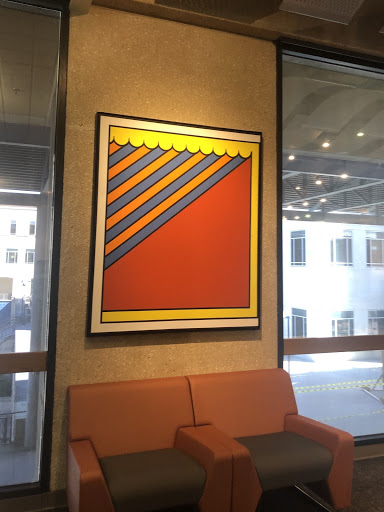The city of San Antonio is known for its large art presence. While the McNay may seem like the best place to experience priceless works of art, UTSA has a collection consisting of works by high caliber international artists such as Nicholas Krushenick, Mexican master Manuel Alvarez Bravo and praised San Antonio artists such as Cándido Veras. UTSA Art Specialist and Curator for the UTSA Art Collection, Arturo Infante Almeida, reveals the history behind the works on campus giving insight into the pieces of history that fill the walls of UTSA.
As art curator for the university since 2002, Almeida specializes in collecting and placing all artwork throughout the campuses. Former UTSA President Dr. Ricardo Romo partnered with Almeida to transform the walls of the university from motivational posters to the inspiring works of South Texas and International artists that now characterize UTSA. Today there are over 2,700 artworks in the collection consisting of pieces from the AT&T Collection, the Veinticinco Project, as well as works from well known California and San Antonio artists and UTSA’s very own alumni and graduate students.
Almeida is constantly rearranging pieces as the university continues to grow, and while his focus is on the current collection, many of the pieces he has incorporated into it have been created by art students and discovered in the 1604 gallery. The works of art that fill the campuses seem to be placed perfectly in each building due to Almeida’s trained photographer eye.
“That’s the hardest part of my job. I go to different departments and different buildings and I have to look at how I can represent the artist’s art in these hallways. I had to train my eye,” Almeida said.
Abstract art is everywhere on campus, but unbeknownst to many students at UTSA, an original Nicholas Krushenick is placed on the second floor of the John Peace Library (JPL). Krushenick was a New York based artist whose work marked the beginnings of Pop Art and would later inspire artists like Andy Warhol. His original piece “Big-Juice March” is part of the AT&T Collection at UTSA and catches eyes every day. Despite the rareness of the piece, Almeida decided to place it above a seating area in such a central location because of an experience he had in 1995 sitting in the Perry-Castañeda Library at UT Austin in front of an original Andy Warhol. Being so close to such a well known and admired work of art in a public setting was something that he would never forget.

“It’s like a full circle, here I am putting an exhibit together here, and I want y’all [the students of UTSA] to experience that too,” Almeida said.
The work of well-known artist Luis Jimenez can be found throughout UTSA’s Main Campus. His sculpture entitled Border Crossing is located on the second floor of the Student Union, and his iconic Fiesta Dancers sculpture stands proudly outside the Student Union. While his sculptures are well known by students at UTSA, Jimenez’s unique drawing of Cesar Chavez on a stone can be found in the Dean’s area in the library. The rare piece is part of the Veinticinco project, a collaboration made up of 25 original prints by 25 Latino and Latina artists, and something Almeida knew he had to include on the campus. Jimenez’s work can also be found in front of the world’s largest museum, the Smithsonian, but luckily students do not have to travel to admire his work. To have his art at the university is significant, and something students should be mindful of as they experience it every day. Jimenez himself felt a deep connection to UTSA and visited multiple times to see his beloved works on display.
The work of many UTSA alumni such as Richard Armendariz and Rex Hausmann can be found in the collection and inspire art students to one day have their own work on display at the university. The work of alumni and faculty professor Richard Armendariz can be found in the Denver Art Museum as well as on campus. His work “Tiburon Love” is located on the second floor of the library, and is one that catches many student’s eye. Armendariz is known for painting landscapes and was inspired by the scenery on his frequent trips between San Antonio and his hometown of El Paso.
The Dean’s area in the library holds the most priceless collection on campus. The two box sets are photos by photographers Manuel Alvarez Bravo and Elliot Erwitt. The Bravo photographs —including photos such as “Tumba reciente” and “Los agachados”— were donated in 1970 by art professor Louis H. Stumberg, and Erwitt’s photos are a central point of a popular study area.
Students, faculty and staff at UTSA are surrounded by these works of art every day and are truly amazed as they strike up conversation and inspire many students to do their thesis’ on certain pieces. Knowing the history behind the works amplifies that experience. With the large collection UTSA has acquired and the admiration thereof, Almeida hopes that UTSA will one day have its very own museum of art and is prepared to curate it in the future. Almeida currently conducts tours of the art on campus upon request and hopes to make them more frequent. The art on campus will continue to characterize UTSA and embrace the culture of San Antonio.
“[Art] Is important to the university itself, to the staff, and to our community itself,” Almeida said.









